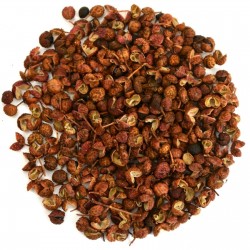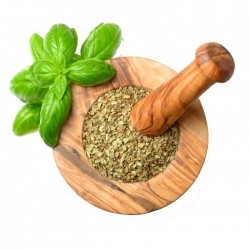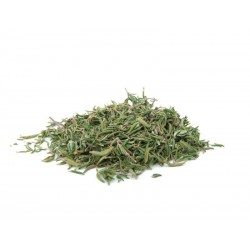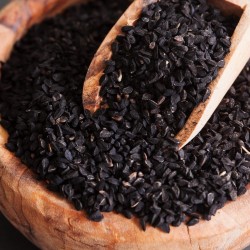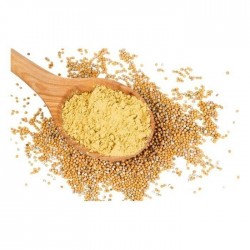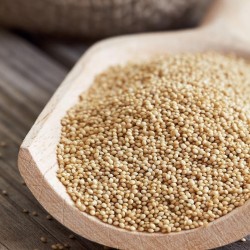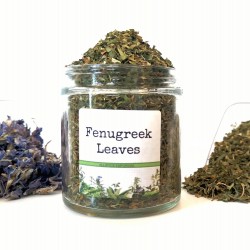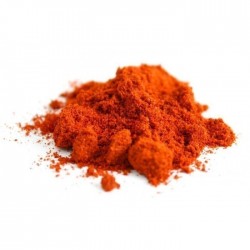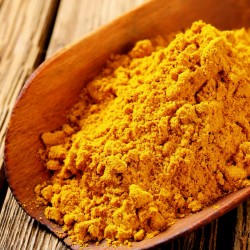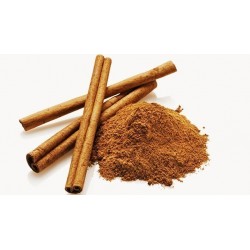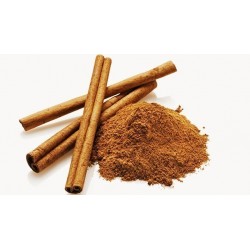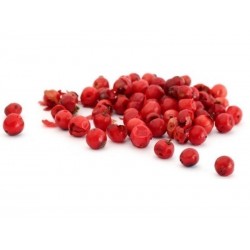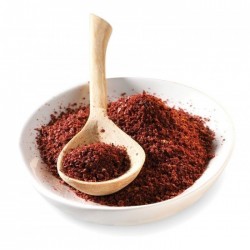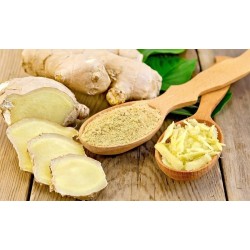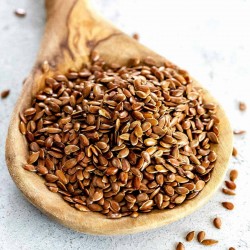Seeds Gallery EU,
5/
5
<h2><strong>Пряности Лён обыкнове́нный, Лён посевно́й</strong></h2>
<h2><span style="color:#ff0000;"><strong>Цена указана за упаковку 10 грамм этой специи.</strong></span></h2>
<p><b>Лён обыкнове́нный</b>, или<span> </span><b>Лён посевно́й</b><span> </span>(лат. <span lang="la" xml:lang="la">Línum usitatíssimum</span>) —<span> </span>однолетнее<span> </span>травянистое растение,<span> </span>вид<span> </span>растений рода<span> </span>Лён<span> </span>(<i><span lang="la" xml:lang="la">Linum</span></i>) семейства<span> </span>Льновые(<i><span lang="la" xml:lang="la">Linaceae</span></i>).</p>
<h2><span></span><span class="mw-headline">Ботаническое описание</span></h2>
<div class="thumb tleft">
<div class="thumbinner"><img alt="" src="https://upload.wikimedia.org/wikipedia/commons/thumb/c/c8/K%C3%B6hler%27s_Medizinal-Pflanzen_in_naturgetreuen_Abbildungen_mit_kurz_erl%C3%A4uterndem_Texte_%28Plate_16%29_%286972234206%29.jpg/220px-K%C3%B6hler%27s_Medizinal-Pflanzen_in_naturgetreuen_Abbildungen_mit_kurz_erl%C3%A4uterndem_Texte_%28Plate_16%29_%286972234206%29.jpg" width="220" height="321" class="thumbimage" /><div class="thumbcaption">
<div class="magnify"></div>
Ботаническая иллюстрация<span> </span>из книги<span> </span><i>Köhler’s Medizinal-Pflanzen</i>, 1887</div>
</div>
</div>
<p>Главный стержневой<span> </span>корень<span> </span>довольно короткий, беловатый, с небольшим числом более крупных первичных ответвлений, но с многочисленными тонкими корешками.</p>
<p>Стебель<span> </span>1(3), 60—120(150) см высотой, большей частью прямостоячий и прямой, тонкий, цилиндрический, чаще простой, ветвящийся лишь в верхней части (в соцветии), бледно-зелёный, со слабым<span> </span>восковым<span> </span>налётом.</p>
<p>Листья<span> </span>весьма многочисленные, сравнительно негусто спирально расположенные, 2—3 см длиной, 3—4 мм шириной, линейные или линейно-ланцетные, наиболее крупные ланцетные, на верхушке острые, сидячие, слегка сизоватые от стирающегося, сравнительно слабо выраженного воскового налёта, гладкие по краю, с тремя<span> </span>жилками.</p>
<p>Соцветие — рыхлая извилина, иногда переходящая в завиток, с ланцетными<span> </span>прицветниками.<span> </span>Цветки<span> </span>сравнительно немногочисленные, большей частью средней величины или довольно мелкие, 1,5—2,4 см в диаметре, на довольно длинных<span> </span>цветоножках, превышающих длину чашечки, утолщённых на верхушках и снабжённых сочленением ниже утолщения.<span> </span>Чашелистики<span> </span>5—6 мм длиной, травянистые, яйцевидные или яйцевидно-ланцетные до продолговато-яйцевидных, острые или коротко приострённые на верхушке, с острым килем, с 2—5, а большей частью с тремя жилками, внутренние несколько более широкие, белоплёнчато окаймлённые, на верхушке по краю шероховатые, тонко реснитчатые.<span> </span>Лепестки<span> </span>12—15 мм длиной, клиновидно-обратнояйцевидные, на верхушке несколько скошено округлённые или притуплённые, цельнокрайние или слегка городчатые, гладкие или слегка гофрированные, голубые или синие с более тёмными жилками, реже белые, розовые или красновато-фиолетовые, книзу суженные в белый, при основании жёлтый ноготок, рано опадающие.<span> </span>Тычинки<span> </span>с линейными, белыми, в верхней части тёмно-синими нитями; тычиночная трубка короткая, кольцевидная;<span> </span>стаминодии<span> </span>треугольной формы, иногда неявственные;<span> </span>пыльники<span> </span>продолговатые, большей частью синие, изредка жёлтые или оранжевые.<span> </span>Завязь<span> </span>яйцевидная, зелёная;<span> </span>столбик<span> </span>с клиновидно-линейными<span> </span>рыльцами, тёмно-синий, до фиолетового. Цветет с июня по июль.</p>
<p>Плод —<span> </span>Коробочка<span> </span>6—8 мм длиной, 5,7—6,8 мм в диаметре, приплюснуто-шаровидная или шаровидно-яйцевидная, с остающейся на ней чашечкой и с небольшим остроконечием на верхушке, желтоватая, большей частью без антоциановой окраски, лишь изредка перед созреванием слабо окрашенная, нерастрескивающаяся; ложные перегородки голые или реже с ресничками.<span> </span>Семена<span> </span>обычно в числе 10, иногда их меньше, 3,3—5 мм длиной, яйцевидные или удлинённо-эллиптические, несколько неравнобокие, сильно сплюснутые, округлённые при основании, островатые на верхушке, светло-коричневые до тёмно-бурых, изредка зеленовато-жёлтые, совершенно гладкие, блестящие.</p>
<table align="center" cellspacing="0" cellpadding="2"><tbody><tr align="center" valign="middle"><td>
<div class="center">
<div class="floatnone"><img alt="Linum usitatissimum (OliBac).jpg" src="https://upload.wikimedia.org/wikipedia/commons/thumb/4/4c/Linum_usitatissimum_%28OliBac%29.jpg/200px-Linum_usitatissimum_%28OliBac%29.jpg" width="200" height="200" /></div>
</div>
</td>
<td>
<div class="center">
<div class="floatnone"><img alt="Linum usitatissimum seed capsules, vlaszaaddozen.jpg" src="https://upload.wikimedia.org/wikipedia/commons/thumb/c/c3/Linum_usitatissimum_seed_capsules%2C_vlaszaaddozen.jpg/260px-Linum_usitatissimum_seed_capsules%2C_vlaszaaddozen.jpg" width="260" height="201" /></div>
</div>
</td>
<td>
<div class="center">
<div class="floatnone"><img alt="Flax seeds.jpg" src="https://upload.wikimedia.org/wikipedia/commons/thumb/1/15/Flax_seeds.jpg/270px-Flax_seeds.jpg" width="270" height="203" /></div>
</div>
</td>
</tr><tr align="center" valign="top"><td colspan="11">
<div>Слева направо: цветок, плоды, семена</div>
</td>
</tr></tbody></table><h2><span></span><span class="mw-headline">Химический состав</span></h2>
<p>Стебли и листья содержат<span> </span>гликозид<span> </span>линамарина, около 20 фенолкарбоновых кислот (п-кумариновая, п-оксибензойная, феруловая, хлорогеновая, кофеилхинная и другие).</p>
<p>Семена содержат жирное<span> </span>высыхающее масло<span> </span>(30—48 %),<span> </span>белок,<span> </span>углеводы,<span> </span>слизь<span> </span>(до 12 %),<span> </span>органические кислоты,<span> </span>стерины,<span> </span>линоцинамарин. В состав жирного масла входят<span> </span>глицериды<span> </span>линоленовой (35—45 %), линолевой (25—35 %), олеиновой (15—20 %), пальмитиновой и стеариновой кислот.</p>
<p>В оболочках семян найдены линокофеин, линоцинамарин, глюкозид линамарин и метиловый эфир Р-окси-р-метилглутаровой кислоты<sup id="cite_ref-3" class="reference">[3]</sup>.</p>
<p>Лён является рекордсменом по содержанию т. н.<span> </span>омега-3 жиров, причём содержание омега-6 жиров в семенах невысокое (подробнее см.<span> </span>льняное масло).</p>
<h2><span></span><span class="mw-headline">Распространение</span></h2>
<p>Вероятно, что родина этого растения — горные районы Индии, Китая и Средиземноморья. Сегодня его широко возделывают в<span> </span>умеренной зоне<span> </span>Европы, Азии и Северной Америки, а также в Северной Африке.</p>
<p>На территорию России лён попал из Азии. Семена льна-долгунца были обнаружены при раскопках<span> </span>Модлонского свайного поселения<span> </span>(начало II тысячелетия до н. э.) на реке<span> </span>Модлона<sup id="cite_ref-4" class="reference">[4]</sup>. В X—XI веках в Киевской Руси крестьяне возделывали лён на волокно и на масло, платили им оброк и подати. Товарное льноводство на Руси возникло в XIII веке<sup id="cite_ref-5" class="reference">[5]</sup>.</p>
<p>В 2014 году мировое производство льноволокна составило 2,6 миллиона тонн. Более 77 % мирового производства приходится на четыре страны —<span> </span>Канаду,<span> </span>Казахстан,<span> </span>Китай<span> </span>и<span> </span>Россию.</p>
<table class="wikitable"><tbody><tr><th colspan="4">Крупнейшие производители льна (тысяч тонн)<sup id="cite_ref-fao2014_6-0" class="reference">[6]</sup></th>
</tr><tr><th bgcolor="#DDDDFF">Страна</th>
<th bgcolor="#DDDDFF">2014 год</th>
</tr><tr><td><span class="nowrap"><span class="flagicon"><img alt="" src="https://upload.wikimedia.org/wikipedia/commons/thumb/d/d9/Flag_of_Canada_%28Pantone%29.svg/22px-Flag_of_Canada_%28Pantone%29.svg.png" width="22" height="11" class="thumbborder" /></span> <span class="wrap">Канада</span></span></td>
<td align="right">872,5</td>
</tr><tr><td><span class="nowrap"><span class="flagicon"><img alt="" src="https://upload.wikimedia.org/wikipedia/commons/thumb/d/d3/Flag_of_Kazakhstan.svg/22px-Flag_of_Kazakhstan.svg.png" width="22" height="11" class="thumbborder" /></span> <span class="wrap">Казахстан</span></span></td>
<td align="right">420,0</td>
</tr><tr><td><span class="nowrap"><span class="flagicon"><img alt="" src="https://upload.wikimedia.org/wikipedia/commons/thumb/f/fa/Flag_of_the_People%27s_Republic_of_China.svg/22px-Flag_of_the_People%27s_Republic_of_China.svg.png" width="22" height="15" class="thumbborder" /></span> <span class="wrap">Китай</span></span></td>
<td align="right">387,0</td>
</tr><tr><td><span class="nowrap"><span class="flagicon"><img alt="" src="https://upload.wikimedia.org/wikipedia/commons/thumb/f/f3/Flag_of_Russia.svg/22px-Flag_of_Russia.svg.png" width="22" height="15" class="thumbborder" /></span> <span class="wrap">Россия</span></span></td>
<td align="right">365,1</td>
</tr><tr><td><span class="nowrap"><span class="flagicon"><img alt="" src="https://upload.wikimedia.org/wikipedia/commons/thumb/a/a4/Flag_of_the_United_States.svg/22px-Flag_of_the_United_States.svg.png" width="22" height="12" class="thumbborder" /></span> <span class="wrap">США</span></span></td>
<td align="right">161,8</td>
</tr><tr><td><span class="nowrap"><span class="flagicon"><img alt="Индия" src="https://upload.wikimedia.org/wikipedia/commons/thumb/4/41/Flag_of_India.svg/22px-Flag_of_India.svg.png" width="22" height="15" class="thumbborder" /></span><span> </span>Индия</span></td>
<td align="right">141,0</td>
</tr></tbody></table><h2><span></span><span class="mw-headline">Значение и применение</span></h2>
<div class="dablink hatnote">См. также:<span> </span>Льняное масло</div>
<div class="thumb tright">
<div class="thumbinner"><img alt="" src="https://upload.wikimedia.org/wikipedia/commons/thumb/5/56/Brown_Flax_Seeds.jpg/220px-Brown_Flax_Seeds.jpg" width="220" height="147" class="thumbimage" /><div class="thumbcaption">
<div class="magnify"></div>
Семя льна — источник<span> </span>Омега-3-ненасыщенных жирных кислот, важный компонент диетического и<span> </span>веганского<span> </span>питания</div>
</div>
</div>
<p>Лён — древнейшая<span> </span>масличная культура, возделывавшаяся в районе<span> </span>Иерихона<span> </span>на заре<span> </span>неолитической революции. В России выращивается в качестве<span> </span>яровой культуры. Из стеблей получают<span> </span>волокно, идущее на изготовление одежды, строительного утеплителя, уплотнительного материала в сантехнике («пакля»). Из семян методом холодного прессования получают масло.<span> </span>Льняное масло<span> </span>(холодного отжима) используется нередко в пищу, но, главным образом, для технических целей (например, для изготовления<span> </span>лаков,<span> </span>олифы, красок, а также непромокаемых тканей, клеёнок). В частности, масло применялось художниками в Европе в средние века для придания блеска картинам. Питательные маски из льна способствуют разглаживанию кожи.</p>
<p>Целебные свойства льняного семени были известны<span> </span>древним грекам.<span> </span>Гиппократ<span> </span>рекомендовал употреблять его при воспалении слизистых оболочек. В качестве лекарственного сырья используют семя льна (лат. <span lang="la" xml:lang="la">Semen Lini</span>), которое собирают в период полной зрелости<sup class="reference">[7]</sup>. Семена льна с горячей водой дают густую слизь, обладающую лёгким слабительным, обволакивающим, мягчительным, противовоспалительным и обезболивающим действием и используются при лечении воспалений пищевода и<span> </span>язвенной болезни желудка. Фармацевтическая промышленность выпускает препарат «Линетол», полученный из льняного масла, который применяется внутрь для лечения и профилактики<span> </span>атеросклероза, а также наружно при лечении химических и термических ожогов и лучевых поражений кожи. Льняное масло<span> </span><span lang="la" xml:lang="la">Oleum Lini</span><span> </span>применяют как слабительное и мочегонное средство при<span> </span>холециститах.</p>
<p>Льняные<span> </span>жмыхи<span> </span>составляют хороший корм для молочного<span> </span>скота. Льняная<span> </span>мякина, получаемая от раздавленных коробочек, служит для кормления<span> </span>свиней.</p>
<p>Из льняного семени изготавливают льняную муку, которую используют в кулинарии.</p>
<p>Лён обыкновенный — официальная цветочная эмблема<span> </span>шведской<span> </span>провинции<span> </span>Хельсингланд<sup id="cite_ref-Svenska_landskapsblommor_8-0" class="reference">[8]</sup>.</p>
Z 34

